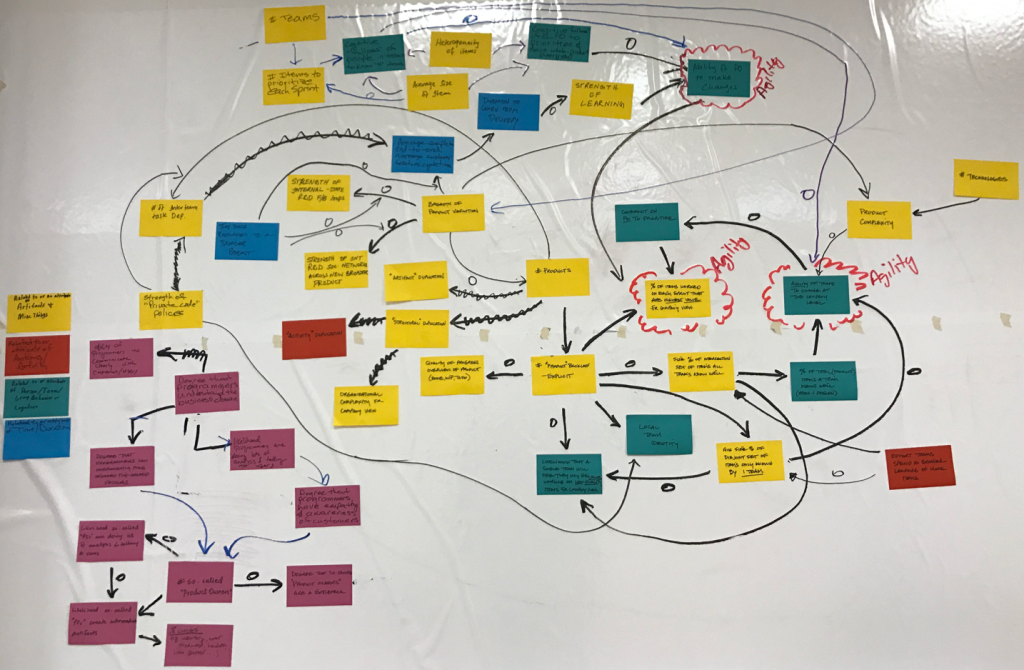One of the primary themes during the Certified LeSS Practitioner course I attended last year was the importance of systems thinking and optimizing for the whole. But it’s not easy to see the whole, especially in large and complex organizations, and to understand how all the parts interact with and influence each other.
For me, learning how to create system models, also known as causal loop diagrams, was one of the most useful takeaways from the LeSS course.
Why are System Models So Helpful?
Visualize System Dynamics
With large and complex systems, it can be difficult to grasp and keep track of how various elements impact one another. System models provide a framework to capture and visually represent what’s happening.
 Model to Have a Conversation
Model to Have a Conversation
The act of collaboratively creating the model generates conversation. The conversation is the most important part and eventually results in shared understanding as everyone works together to capture and document the system interactions.
Focus on the Why
A great outcome of system modeling is that it helps people to understand not only what is happening, but why it’s happening. Throughout the LeSS course, instead of simply stating one of the LeSS rules as fact, Craig Larman had us create sections of a system model ourselves, so that we could to discover the reasoning behind the rule. In this way, we owned the realization and had more buy-in.
Help Identify Causes of System Sub-optimization
People have a cognitive bias towards local optimization. Without a way to anticipate the impact on the whole system, it’s common to optimize the part we are most familiar with. Visualizing the interactions may help people discover where they have inadvertently sub-optimized the whole in an attempt to locally optimize a small part.
Ready to create a system model of your organization? In my next blog post, I’ll explain the elements and notation used in system models through an example from training.
For more info on LeSS, check out less.works, these books by LeSS co-founders Craig Larman and Bas Vodde (Scaling Lean & Agile Development, Large-Scale Scrum), and attend Certified LeSS Practitioner training hosted by Excella on April 26-28.